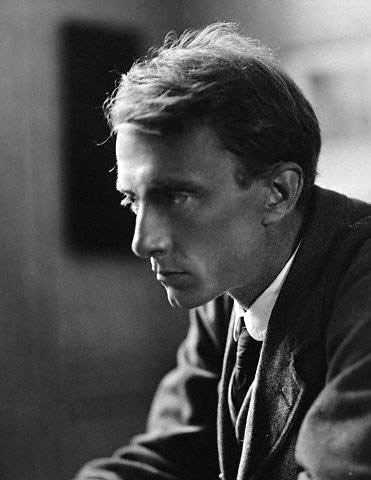During the First World War, he enlisted in the Artists Rifles in July 1915, although as a mature married man he could have avoided enlisting. In November 1916 he was commissioned into the Royal Garrison Artillery as a second lieutenant. However, he was killed in action soon after he arrived in France at Arras on Easter Monday, 9 April 1917.
He is buried in the Commonwealth War Graves Cemetery at Agny in France (Row C, Grave 43), although he is commemorated with his brother in New Battersea (Morden) Cemetery.
Whilst he is remembered as a war poet, his body of work actually goes far wider than that, and - if anything - he is better described as a poet of the British countryside with works such as Tall Nettles, A Cat and Adlestrop.
During the First World War, he enlisted in the Artists Rifles in July 1915, although as a mature married man he could have avoided enlisting. In November 1916 he was commissioned into the Royal Garrison Artillery as a second lieutenant. However, he was killed in action soon after he arrived in France at Arras on Easter Monday, 9 April 1917.
He is buried in the Commonwealth War Graves Cemetery at Agny in France (Row C, Grave 43), although he is commemorated with his brother in New Battersea (Morden) Cemetery.
Whilst he is remembered as a war poet, his body of work actually goes far wider than that, and - if anything - he is better described as a poet of the British countryside with works such as Tall Nettles, A Cat and Adlestrop.
Sponsored by Ancestry
Advertisement
Advertisement






